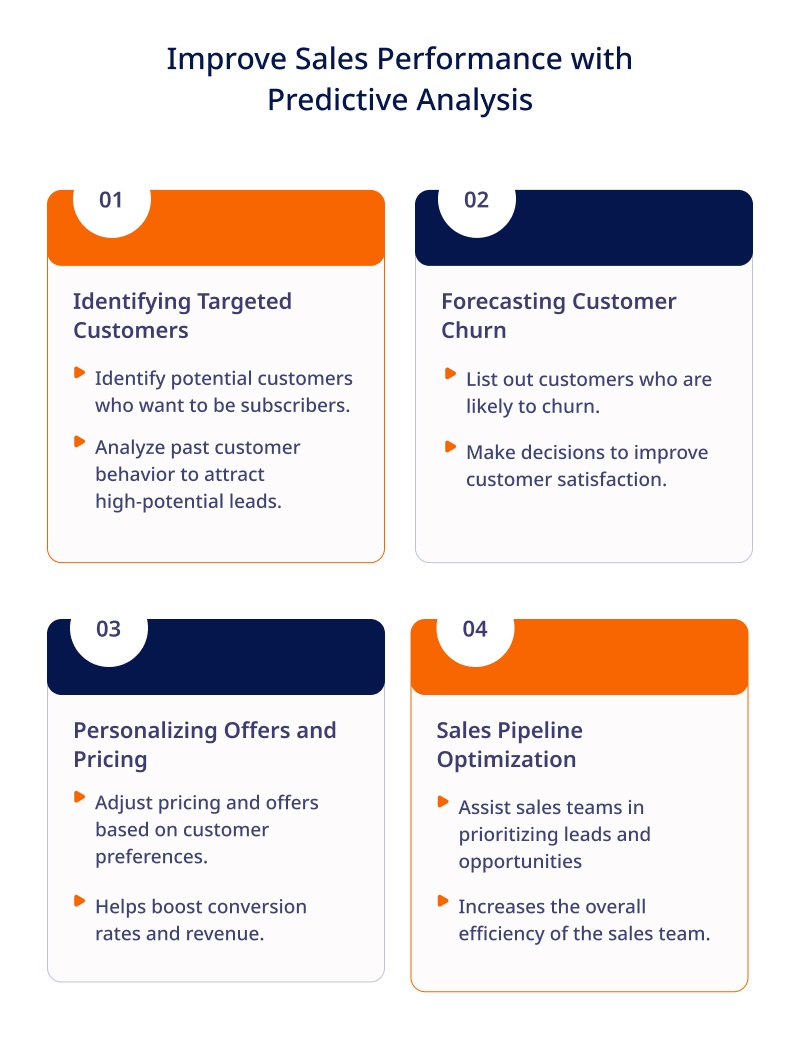Have you ever considered how some companies excel in the subscription-based model while others struggle to retain existing customers or maximize revenue?
Netflix, Spotify, and Amazon; all big companies have successful subscription-based models. But how did they make it work for them despite having millions of subscribers? What’s the secret to their seamlessly operating subscription models?
This blog post is the answer to all your related questions. We will also share insights into running a successful subscription-based model.
If you are also grappling with challenges in approaching new customers and retaining existing ones, it’s time to dive deep into analysis.
So, let’s begin!
What is Subscription Revenue Software?
Subscription Revenue Software helps businesses operate subscription lifecycles, such as sign-ups, billing, invoicing, payment processing, customer management, and churn analysis.
Common Features
1. Subscription Management
Subscription Revenue Software allows businesses to manage different types of subscription plans, durations, and pricing tiers, giving customers flexibility while streamlining internal processes.
2. Billing and Invoicing
Automated billing and invoicing processes ensure accurate and timely payments, reducing administrative burdens and minimizing revenue leakage.
3. Customer Data Management
It stores and organizes customer information, enabling businesses to gain insights into customer behavior, preferences, and interactions.
4. Churn Analysis
Analyzing customer churn patterns helps identify potential churn risks, allowing proactive measures to retain valuable subscribers.
Understanding Predictive Analytics
Predictive Analytics helps to predict future events or outcomes using previously stored data, statistical algorithms, and machine learning. It analyzes current market trends in existing data to develop models to forecast future behaviors. These models are then applied to new data to generate insights and make accurate predictions.
Role of Data in Predictive Analytics
Data is the foundation of predictive analytics. The more relevant and high-quality data available, the more accurate and valuable the predictions become. The data includes customer demographics, usage patterns, subscription history, customer interactions, and external factors like market trends or economic conditions.
Key Components
Data Collection and Preparation: Gathering and cleaning data from various sources, ensuring it is accurate, complete, and relevant for analysis.
Data Analysis and Modeling: Data analysts and scientists identify trends and construct predictive models using statistical techniques and machine learning algorithms.
Model Evaluation: The generated models are evaluated using performance metrics to ensure their accuracy and reliability.
Deployment and Integration: Successful models are integrated into the Subscription Revenue Software, enabling real-time predictions and actionable insights.
How does Predictive Analytics Help?
Improved Revenue Forecasting: Predictive analytics can analyze past revenue trends and customer behaviors to forecast future subscription revenues accurately. This helps businesses plan resources effectively and set realistic revenue targets.
Customer Retention and Personalization: By analyzing customer data, predictive analytics identifies factors influencing customer churn. Businesses can then implement personalized retention strategies to reduce churn rates and increase customer loyalty.
Dynamic Pricing Strategies: It can optimize pricing models based on customer demand, competitor pricing, and seasonality, improving customer satisfaction.
Enhanced Marketing: By understanding customer preferences and behaviors, businesses can tailor marketing campaigns to target the right audience, increasing conversion rates.
Leveraging Predictive Analytics in Subscription Revenue Software
Predictive analytics revolutionizes business subscription revenue software, optimizing decision-making and customer satisfaction. Analyzing data like purchase history and demographics enables personalized recommendations, boosting revenue and growth.
Invoicera showcases the potential, empowering businesses with predictive modeling for pricing, customer churn prediction, and personalized product suggestions, fostering profitability and loyalty.
Improving Customer Retention and Engagement
Customer retention has emerged as a critical factor in long-term success in the fiercely competitive landscape of subscription-based models. Predictive analytics offers valuable tools to identify at-risk customers and enhance customer engagement, leading to increased loyalty and prolonged subscription periods.
Importance of customer retention
Customer retention directly impacts the bottom line of subscription businesses. Retaining existing customers is more economical than finding new ones. Loyal customers contribute to stable revenue streams and serve as brand advocates, attracting new subscribers through positive word-of-mouth.
How predictive analytics can identify at-risk customers?
Predictive analytics can analyze customer data and behavior to identify warning signs of potential churn. Subscription providers can flag at-risk customers by tracking usage patterns, engagement levels, and customer feedback. Using this information, businesses can take steps, such as personalized offers, loyalty rewards, and timely customer support, to mitigate churn risks and improve retention rates.
Enhance customer engagement with predictive insights
Predictive analytics goes beyond churn prediction; it can also predict individual customers’ most effective engagement strategies. Businesses can tailor their engagement efforts by understanding customer preferences, preferred communication channels, and timing, such as targeted email campaigns, personalized content, and relevant notifications. These strategies result in higher customer satisfaction and increased overall engagement.
Enhancing Business Decision-Making
Predictive analytics is pivotal in supporting data-driven decision-making for subscription revenue software companies. By analyzing vast amounts of previous and real-time data, businesses can make more informed choices to foster growth and remain competitive.
1. Identifying Growth Opportunities and Market Trends
Predictive analysis can uncover hidden patterns and trends within the market, enabling businesses to identify emerging opportunities and stay ahead of their competitors.
2. Predicting Demand and Supply Patterns
Accurate demand forecasting helps businesses ensure they have the right inventory and resources to meet customer demands. Additionally, it helps prevent overstocking or stockouts, reducing operational costs.
3. Optimizing Pricing Strategies
Predictive analytics can analyze market conditions, customer preferences, and competitor pricing to optimize pricing strategies for maximizing revenue and profit margins.
4. Enhancing Customer Experience
By understanding customer behavior and preferences through predictive analytics, businesses can effectively enhance their products and services to match customer needs.
5. Reducing Risk
Predictive analysis can help mitigate potential risks by identifying potential problems before they escalate, allowing companies to take proactive measures.
Predictive Analytics with Invoicera
Invoicera has a lot of good reviews when it comes to predictive analytics of your recurring invoices and payments. Consider the below features of Invoicera before choosing subscription software.
1. Data Visualization
Invoicera provides intuitive data visualization tools that present complex data in easy-to-understand charts, graphs, and dashboards. It helps businesses quickly grasp key performance metrics and identify trends.
2. Churn Prediction
It can accurately predict customer churn, enabling businesses to implement targeted retention strategies and reduce churn rates effectively.
3. Revenue Forecasting
It offers robust revenue forecasting features that leverage historical data to predict future revenue, enabling businesses to plan budgets and investments more effectively.
4. Customer Segmentation
Invoicera allows businesses to segment their customer base based on various attributes, helping them tailor their marketing strategies for better customer engagement.
5. Pricing Optimization
Invoicera’s predictive analysis tool can analyze competitor pricing, market conditions, and customer behavior to optimize pricing strategies, resulting in increased customer acquisition and retention.
Conclusion
Predictive analysis can empower your business and help you make better revenue-generation decisions.
Embracing predictive analytics also streamlines internal operations, leading to increased efficiency, reduced costs, and improved resource allocation.
Data security and privacy also play a crucial role; you can rely on the most secure tool, Invoicera – the best recurring billing solution for your subscription-based business.
Thus, it’s time to use subscription revenue software and unlock your key to sustained success.
FAQ
How can businesses ensure data security and privacy when using predictive analytics?
When you use any analysis tool, data security becomes paramount. Businesses must use the most reliable tool to protect sensitive information like customer data and other financial reports from unauthorized access or misuse.
Is predictive analytics suitable for all types of subscription-based businesses?
It can benefit almost all types of subscription-based businesses. However, its effectiveness depends on the availability of relevant data, the subscription model’s complexity, and the organization’s willingness to invest in the necessary infrastructure and expertise. Smaller businesses with limited data may need help to implement predictive analytics effectively.
How frequently should businesses update their predictive analytics models?
It depends on the nature of business, market trends, and customer behavior. Ideally, businesses should regularly monitor and refresh their models to reflect current data and remain accurate and relevant.









